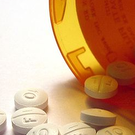Unresponsiveness To Revlimid Or Thalidomide Indicates Poor Response To Stem Cell Transplant, Study Finds

Patients who do not respond at least partially to treatment with Revlimid (lenalidomide) or thalidomide (Thalomid) prior to a stem cell transplant may have significantly shorter survival times, according to a recent study published in the journal Blood.
Currently, the standard treatment plan involving stem cell transplantation begins with induction therapy, which decreases the number of abnormal cells and proteins in a patient’s bone marrow before collection of stem cells for the transplant. Next, patients undergo high-dose chemotherapy and transplantation, after which, some patients receive consolidation or maintenance therapy.
Past studies have shown that regardless of how well a patient responds to induction, the transplant can still be performed and leads to the same remission duration. As a result, some researchers have questioned the need for induction therapy at all. However, those studies were conducted before new drugs were available as treatment options. Patient response rates have increased dramatically with Revlimid and thalidomide induction.
In this retrospective study, researchers evaluated the effectiveness of induction with Revlimid and thalidomide by examining patients’ progression-free and overall survival post-transplant.
Researchers looked back at the data of 286 patients diagnosed with multiple myeloma between 1998 and 2008 who had received either Revlimid or thalidomide-based induction prior to single or double autologous stem cell transplants, in which their own stem cells were collected before high-dose chemotherapy and then transplanted back afterward. Patients did not receive any consolidation or maintenance therapy.
Patients were grouped into three categories. The 232 patients (81 percent) who reached partial response after induction were placed in the “responsive” group. The 25 (9 percent) patients who initially responded, but then had disease progression, were known as “relapsed,” and the 29 patients (10 percent) who did not reach partial response were known as the “refractory” group.
Responsive patients had a significantly longer median progression-free survival after transplant than refractory or relapsed patients (22.1 months, 15.2 months, and 12.0 months, respectively). They also had a longer median overall survival than relapsed-refractory patients (73.5 months versus 30.4 months).
Post-transplant, 50 percent of responsive patients achieved at least a very good partial response (VGPR) in comparison to 22 percent of relapsed-refractory patients. Researchers observed that patients who achieved a very good partial response post-transplant had the same remission duration, regardless of how they responded to induction.
Researchers concluded that as induction therapies improve, patients who do not respond to induction therapy are also less likely to respond to stem cell transplant. However, they could not decisively state that transplants should not be performed in this patient group, since their study did not compare the results of transplant versus alternative treatment plans.
They also speculated that the biochemical activity responsible for a patient’s unresponsiveness to Revlimid or thalidomide induction may also contribute to their rapid disease progression after transplantation.
For more information, please see the journal Blood (abstract).
Related Articles:
- None Found
